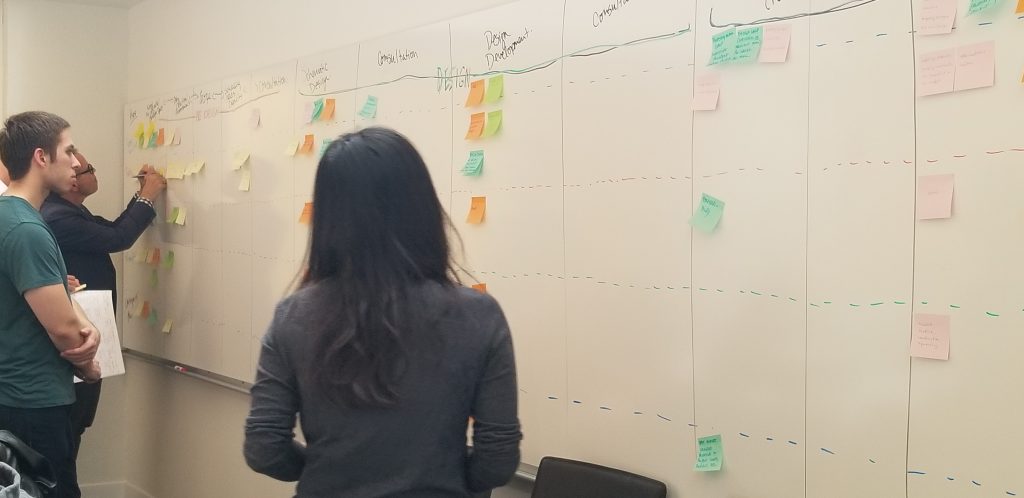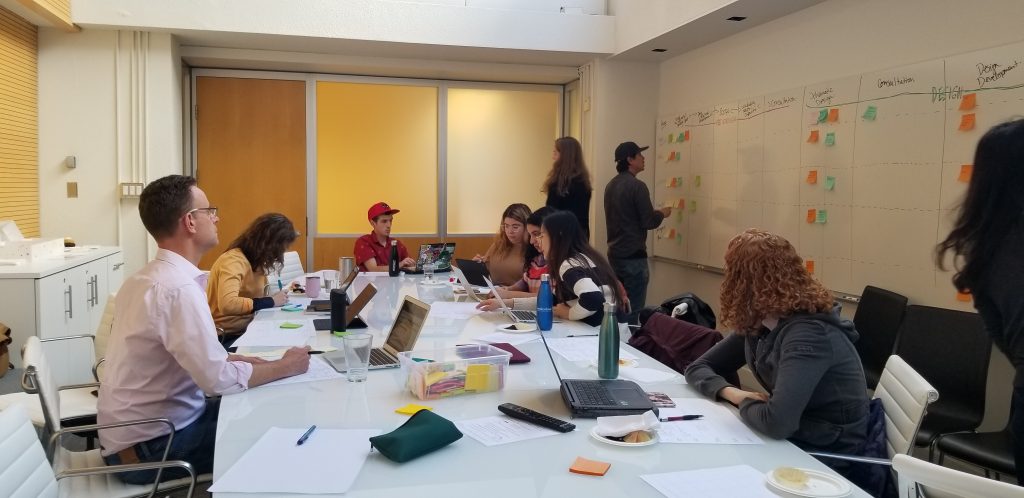By Darren Clift, Writer

Playing with sticky notes isn’t just for kindergarten classrooms. For universities and colleges who practise design thinking, these little pieces of paper serve as creative tools, and a wall covered in rainbow-coloured sticky notes can lead to big ideas. The Innovation Hub’s Transforming the Instructional Landscape (TIL) team experienced this earlier this semester, when we collaborated with our project partners at Academic + Campus Events (ACE) in a Journey Mapping session.
(It didn’t hurt that the session started with cupcakes—a wonderful way to commence the next step of a meaningful partnership.)
The team drew out a physical journey map that depicted the stages of the classroom design process, and assembled project stakeholders and participants to reflect on that experience. For this session, the Innovation Hub’s TIL team was joined by six staff members from ACE, who were selected to cover diverse experiences and knowledge bases. Each participant approached the activity from the perspective of a persona, either fictional or their actual role.
Inhabiting their persona, participants reflected on the process and how their role would approach scenarios, in response to provided prompts. They discussed the various stages, the people involved, the time required, and any other valuable information necessary for progress.
Now the fun part of Journey Mapping began: sticky notes. Participants wrote their ideas down and placed them under corresponding categories based on various stages of the project. Each participant received a uniquely coloured pack of notes, so their ideas were distinct from everyone else’s.
The TIL team collected all the ideas, which they then used to structure in-depth interviews that further probe the ways in which multi-stakeholder design can and does work at UofT. The Journey Map allowed us to embrace creativity and find new perspectives for our project. It’s design kindergarten, using creative play to reveal meaningful insights.

0 comments on “Little Papers, Big Ideas”